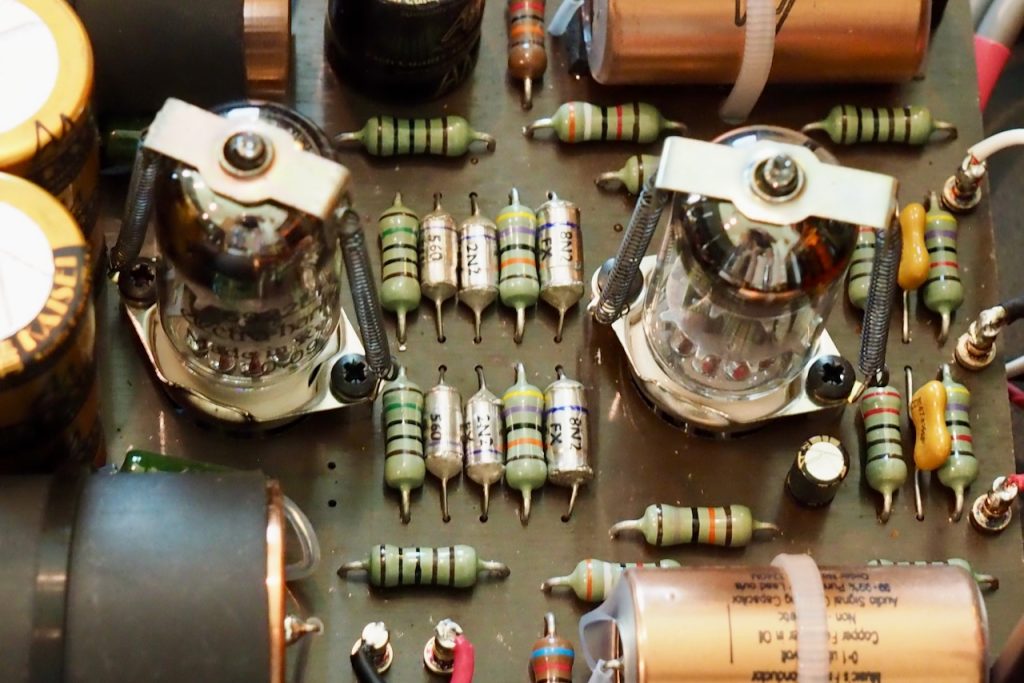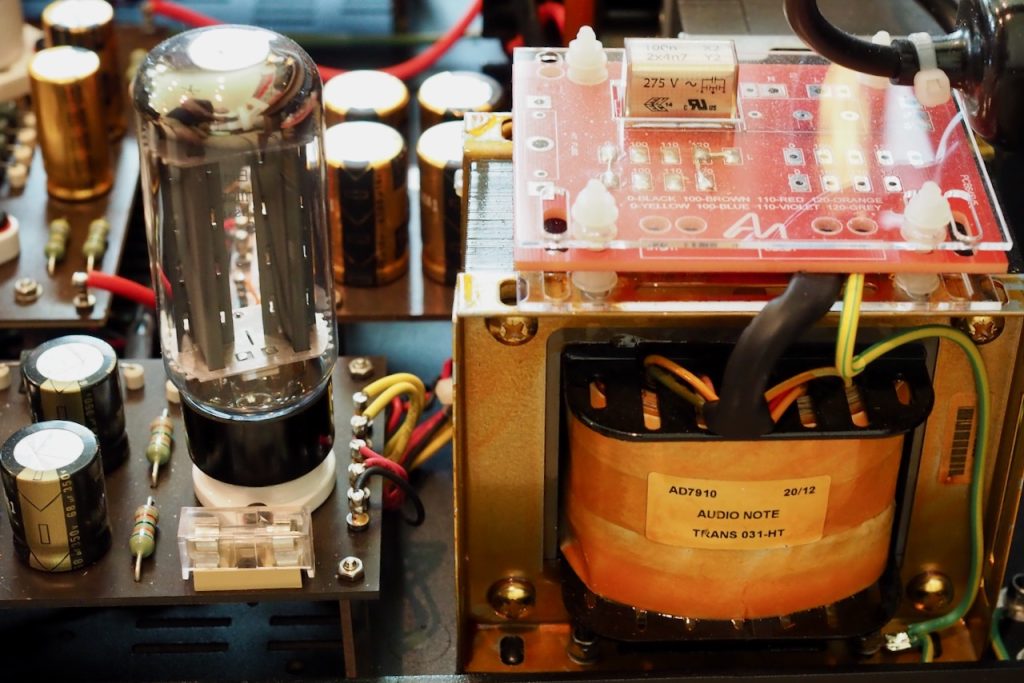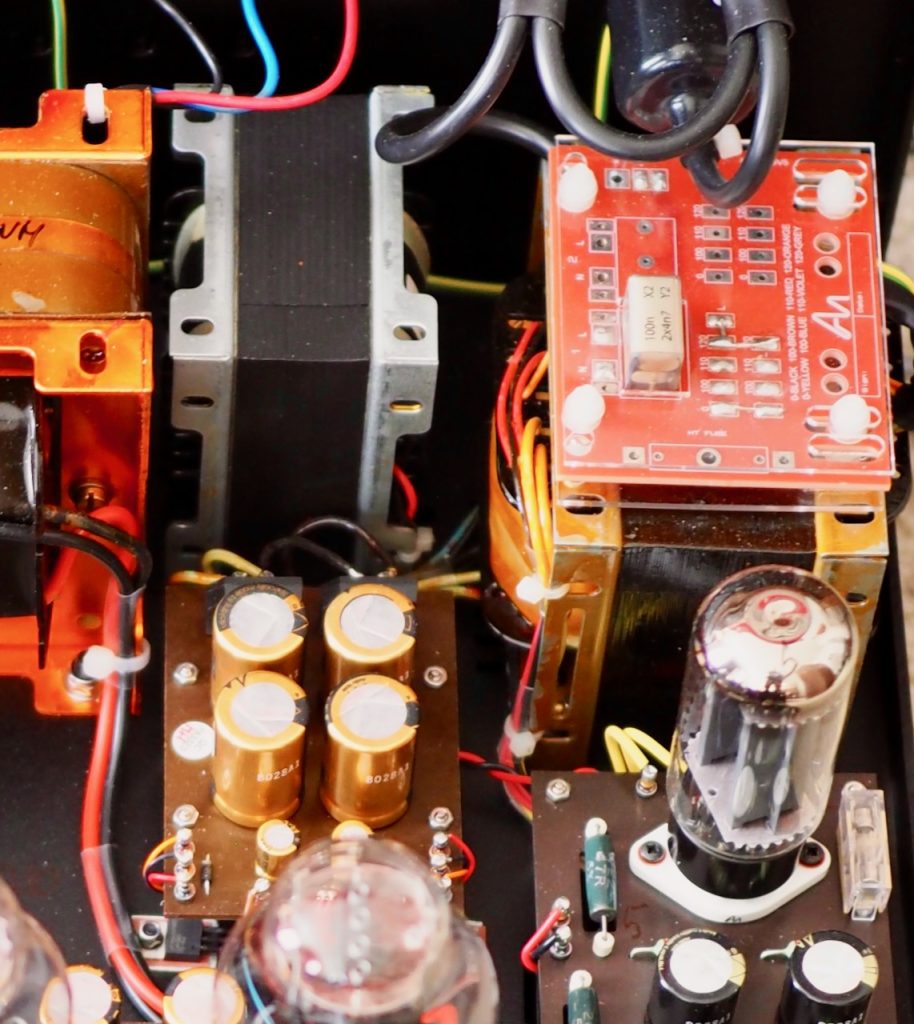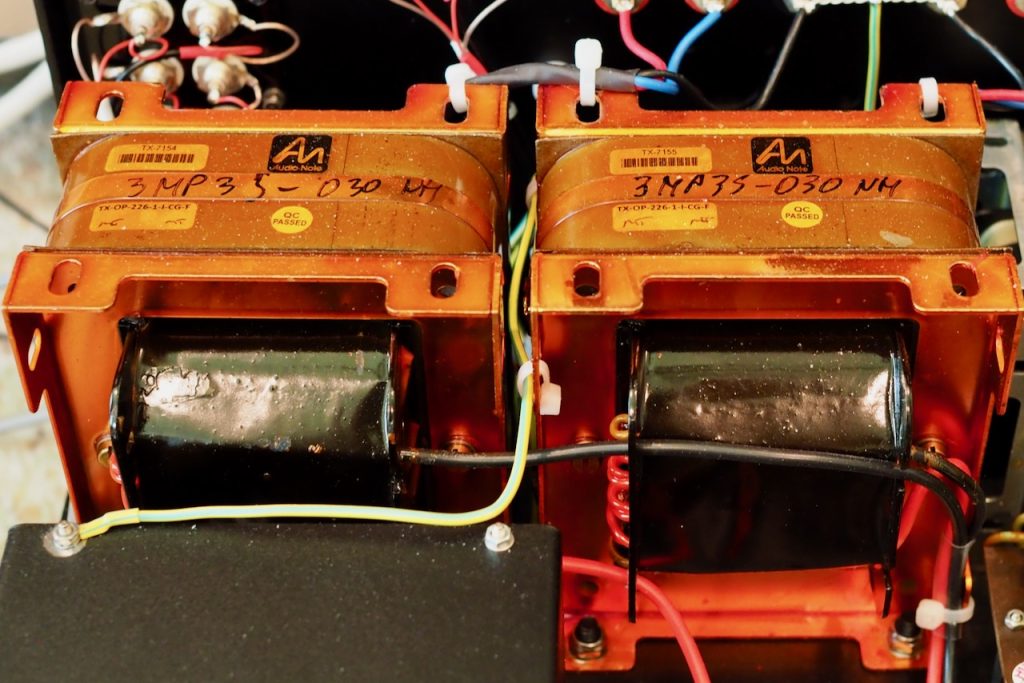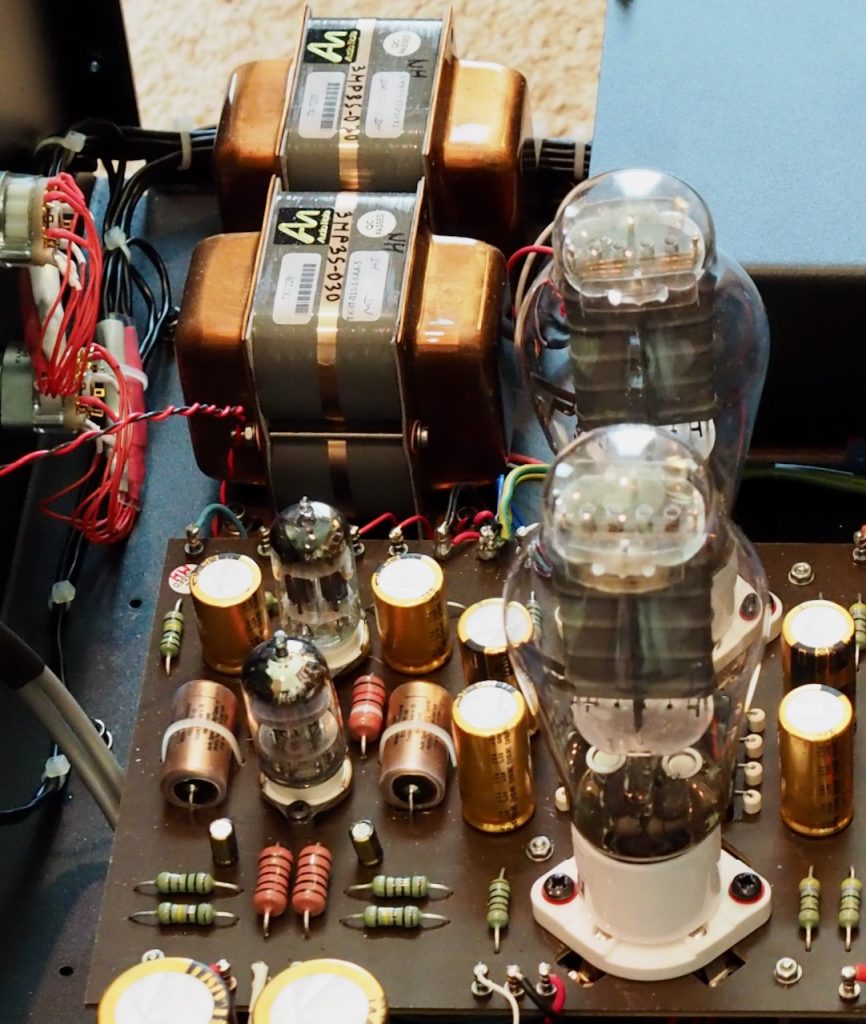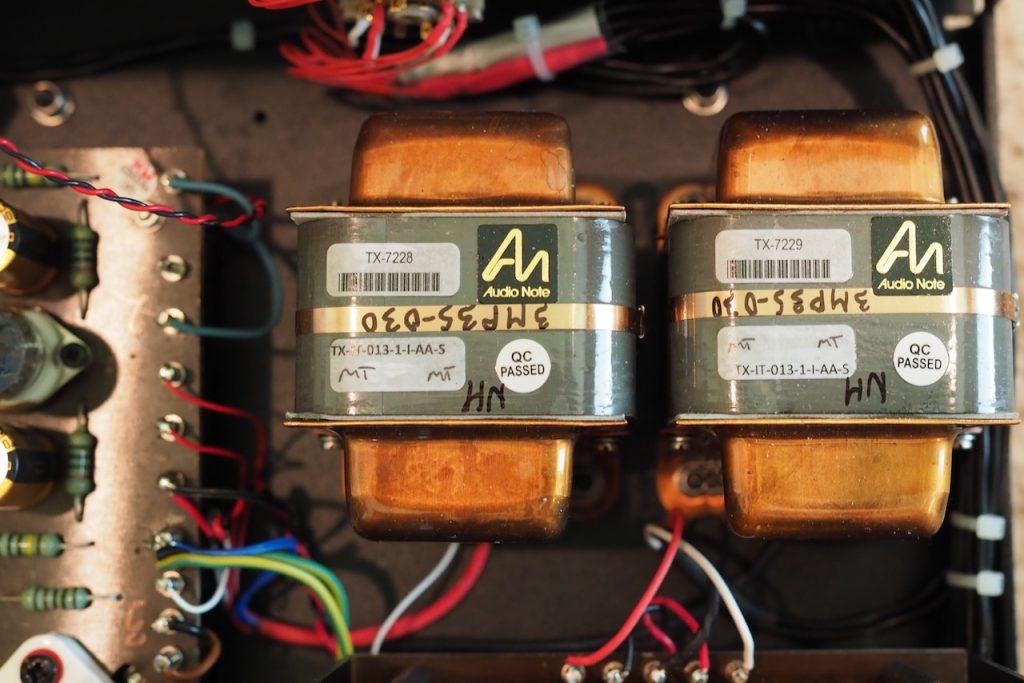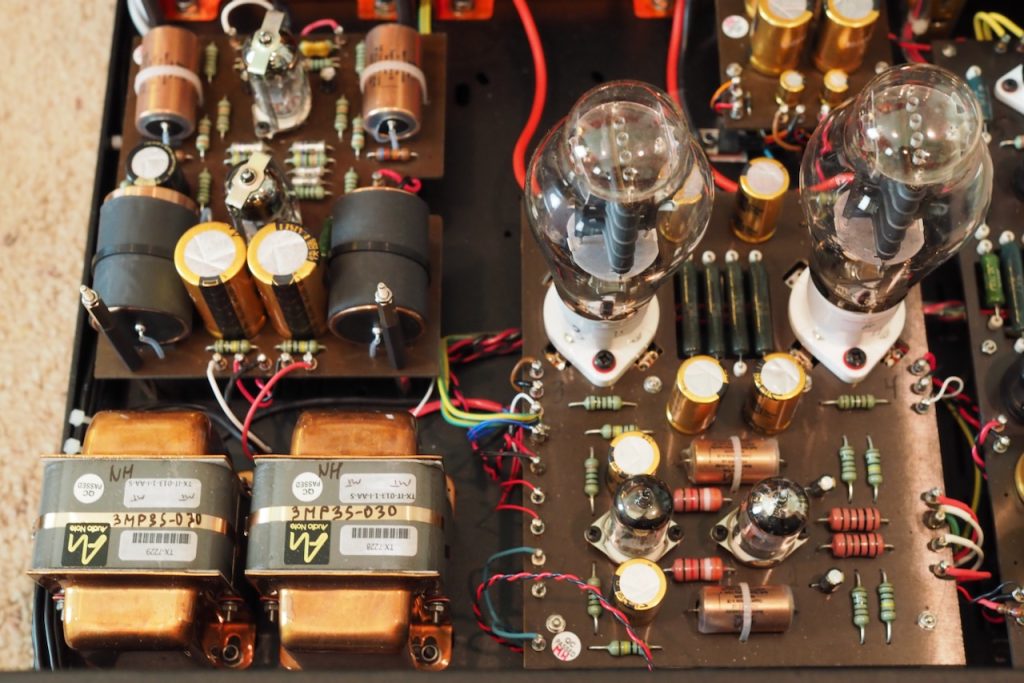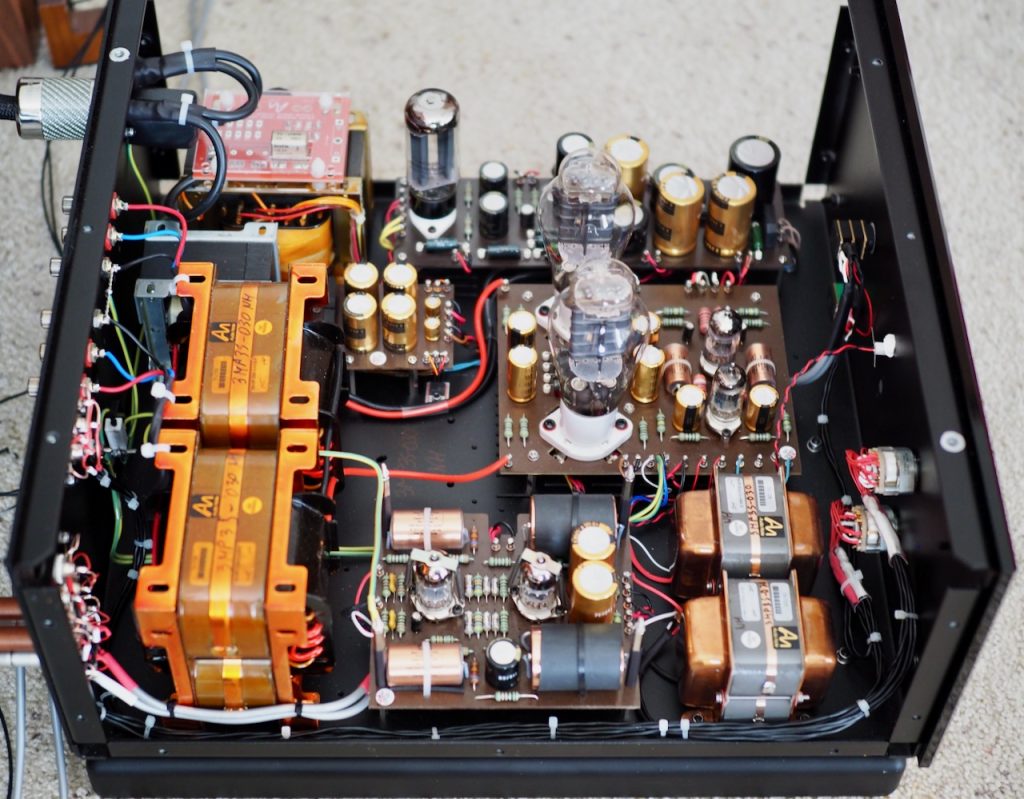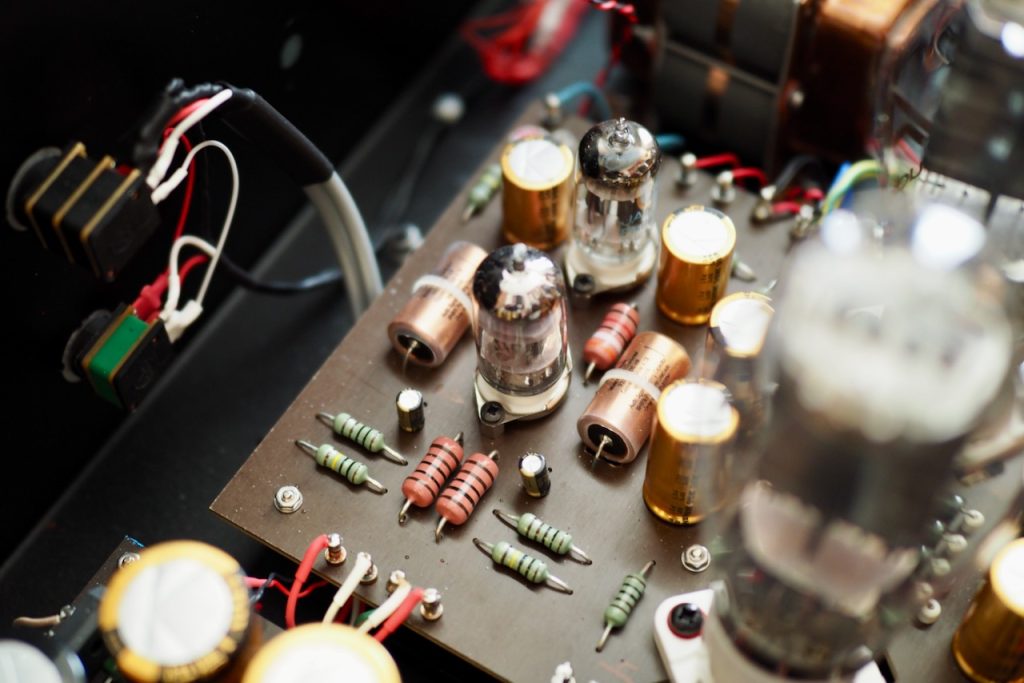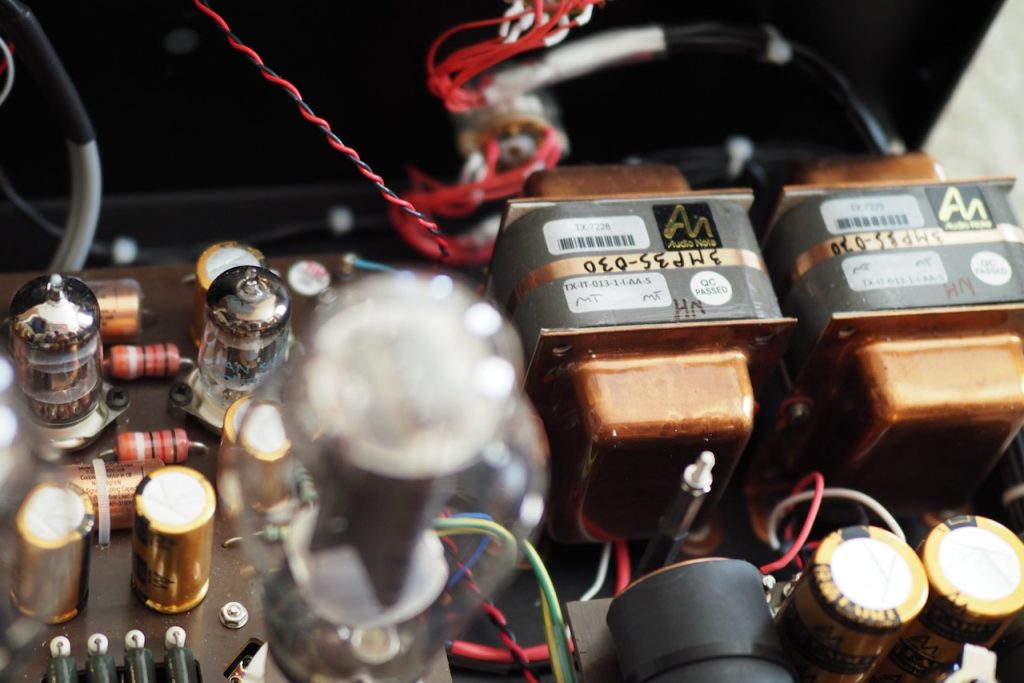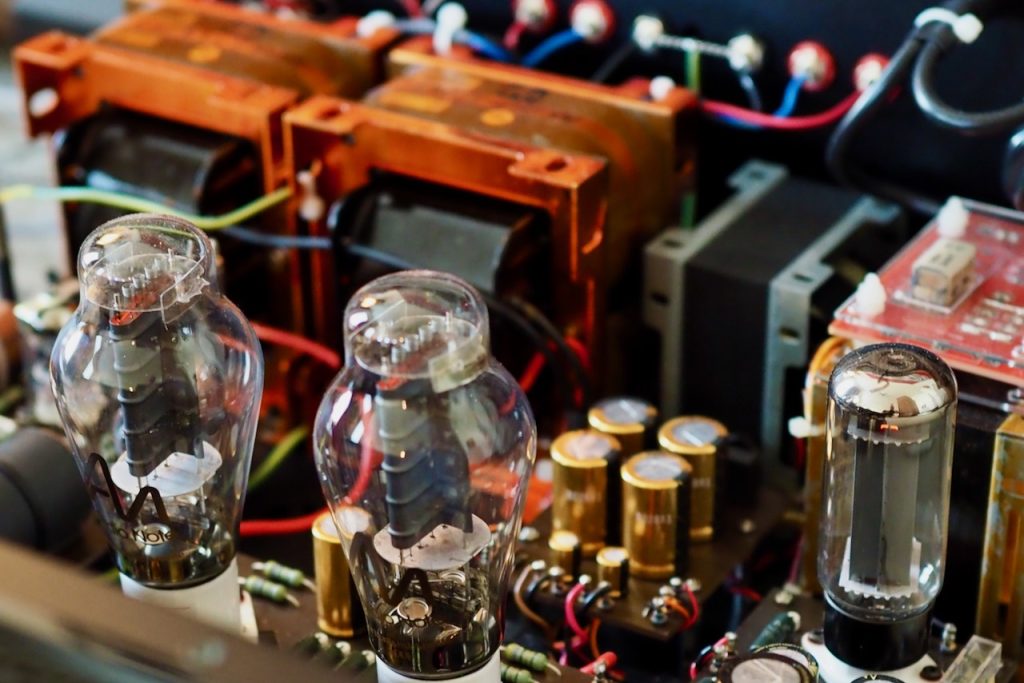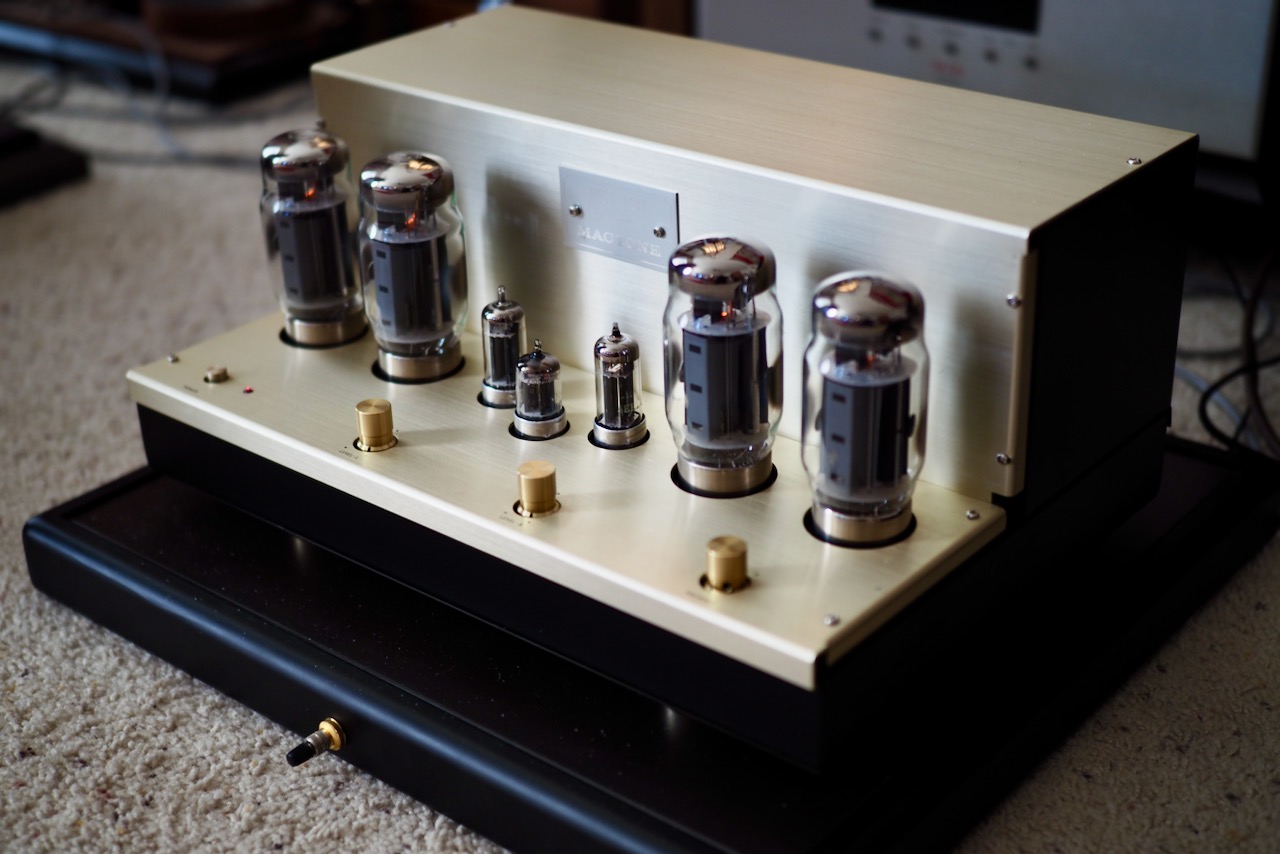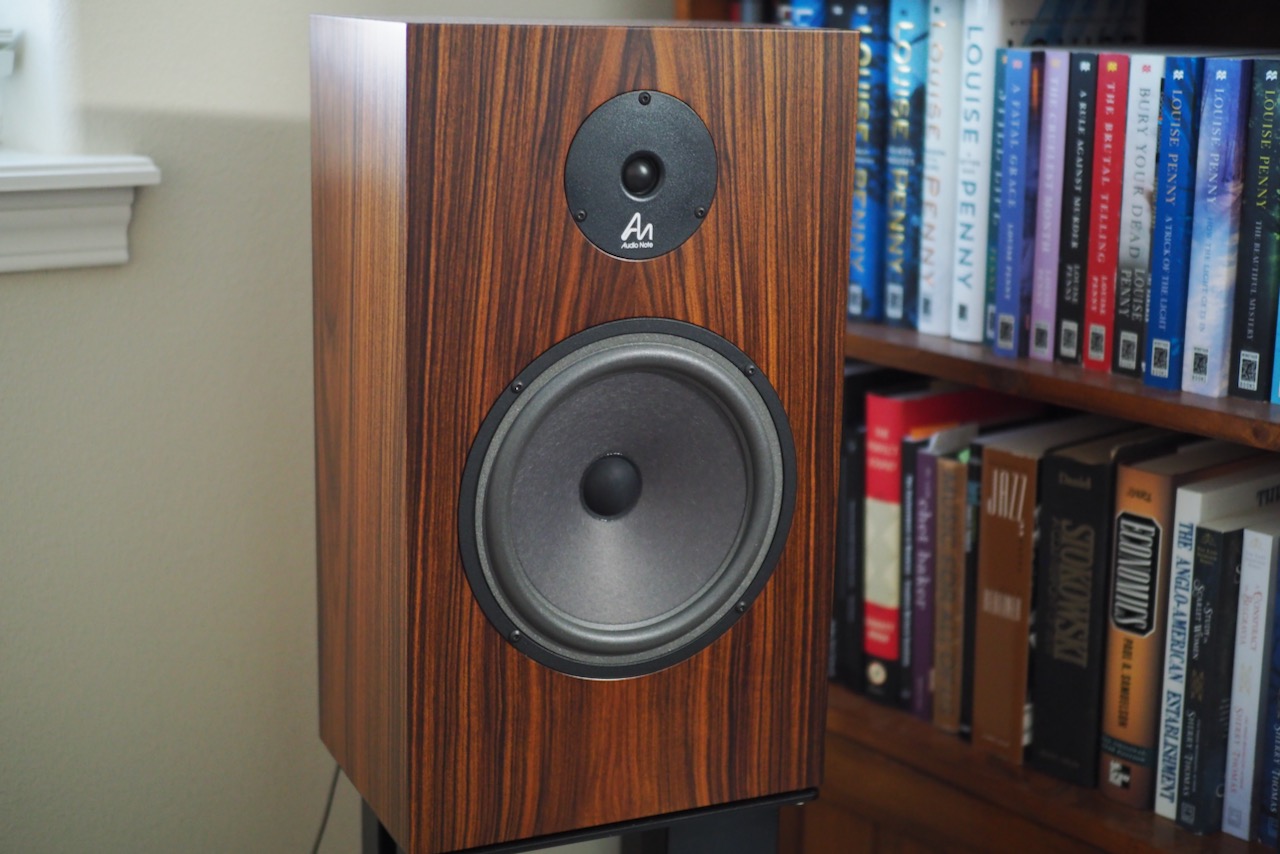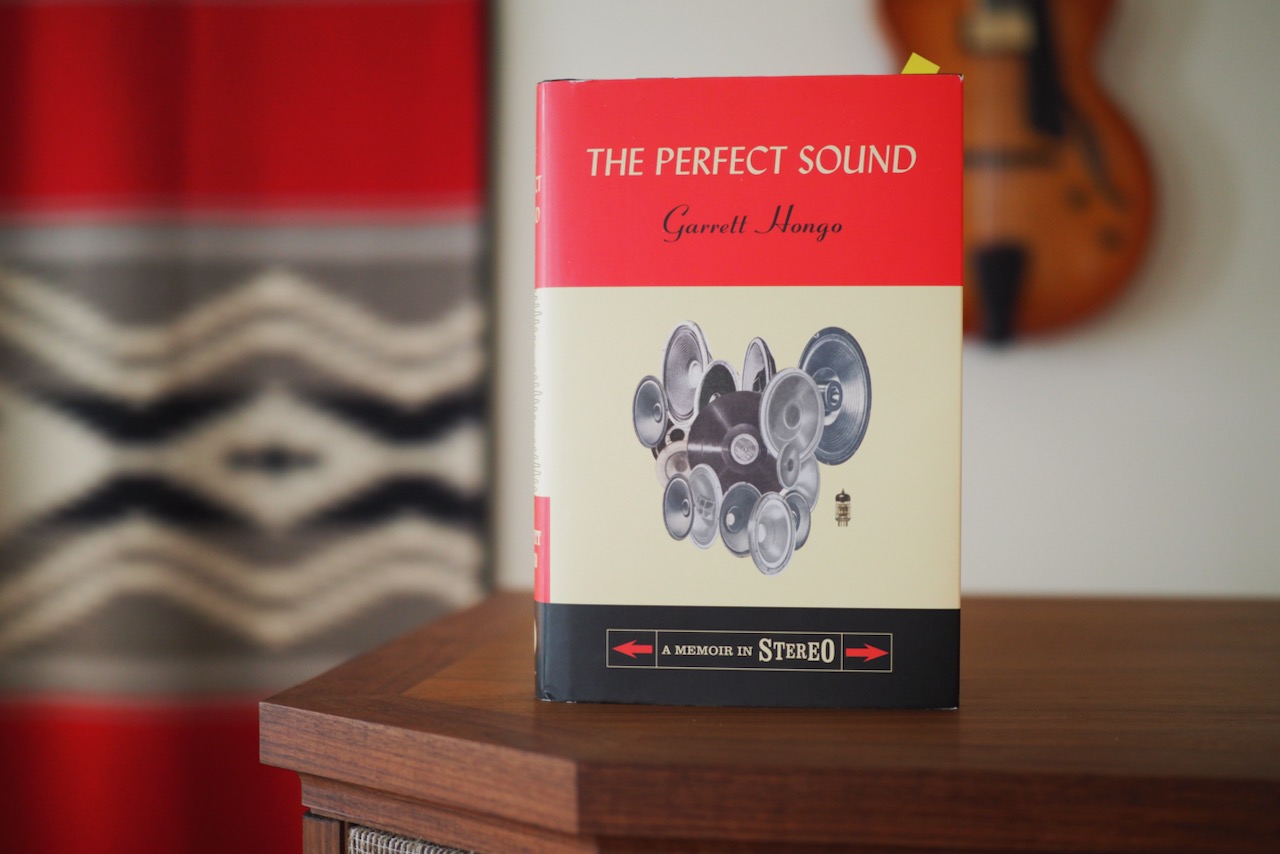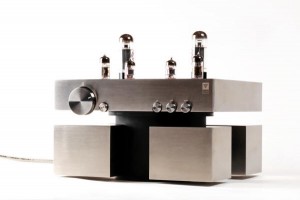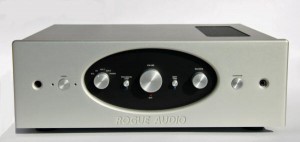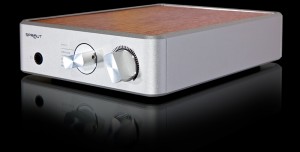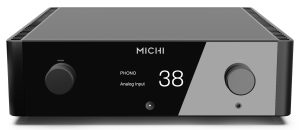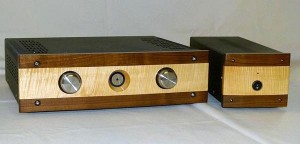I asked Audio Note (UK)'s Darko Greguras (Design and R&D Engineer, Technical Manager), and Andy Grove (Senior Engineer, Research, Product Conception, Design, Management, Technical & Creative Writing, Strategy & Marketing) if they could tell us a little more about the design of the Meishu.
Here's what Darko Greguras had to say about the design of the Meishu's phono stage:
"We call our ECC83/12AX7 and ECC88/6DJ8 phono stage a classic with good reason, as it is a zero-feedback, single-ended design that we use in a number of our products, like our M1 and M2 preamplifiers, and the Oto, Soro, and Meishu Tonmeister integrated amplifiers."
"These products utilize essentially the same phono stage design, with slight variations of components to optimize their performance with the component parts used elsewhere in their designs, and their power supply arrangement."
"The phono stages are designed to provide the best sonic blend of the ECC83/12AX7 and ECC88/6DJ8 dual triodes in anode followers, with RIAA correction between the stages, that are optimally biased for a good dynamic transfer, yet sweet transients."
"In the M1 phono stages, and Oto and Soro phono stages, the power supply is based on solid-state diodes."
"The M2 phono stage, and the Meishu Tonmeister phono stage, benefits from the valve rectification and chokes utilized in the power supply, which gives them a more natural sound quality, with richer harmonics, that is closer to real life."
"The parts optimization through these variations means an even step up from the metal film Vishay / Beyschlag resistors and standard electrolytic capacitors, Audio Note (UK) tin capacitors, and copper wiring, to a mix of 0.5 and 1W Audio Note (UK) tantalum resistors, a mix of Audio Note (UK) standard and Audio Note (UK) Kaisei series of electrolytic capacitors, Audio Note (UK) copper coupling capacitors, and copper wiring. As we move up the ladder of these components parts, they have less sound of their own."
"This is what the Tonmeister Voicing Strategy is all about. Voicing is a fine art, with one aspect being understanding the differences of various transformer core materials and different winding designs/strategies, both on a scientific and "Kung Fu mastery" level. This is fundamental, as transformer behavior is most critical at a very low signal level. The new generation of Andy's (the Professor) transformers is on another sonic level, and I am very much enjoying these in our recent Meishu Tonmeister prototype at home, even in a most basic application."
"As we increase the quality of the output transformer, its core material and primary and secondary windings material, we naturally elevate the parts around it to suit the increased resolution and it's improved low-level behavior. This then naturally involves a change in board materials, the wire gauge used for point-to-point wiring, resistors and capacitors, etc."
"The basic Level Three structure is more than happy singing from it's EI core output transformers combined with a copper wiring, a mix of 0.5 and 1W Tantalum resistors, Audio Note (UK) copper coupling capacitors, and standard Audio Note (UK) electrolytic capacitors."
"However, the Silver Signature Level 3 with its Super HiB copper wound transformers "wants" more in terms of quality and a cross sectional area of the conductors used for the point to point sections, so 2W non-magnetic Ni-chrome resistors and a blend of Audio Note (UK) standard and Kaisei electrolytic capacitors responds to this task well, retaining a sonic balance of the lesser combination but extending the grip and believability."
"Components choices are carefully considered in every product in order to maintain the Audio Note (UK) signature sound quality at each performance level, and also ensures significant sonic improvements as one moves up through our performance levels."
I asked Andy Grove if he could tell us a little more about the new transformers he designed, and how they relate to the new Meishu Tonmeister design strategy:
"As Darko mentioned, the Meishu Tonmeister uses a similar three-stage transformer coupled signal flow to that in the Jinro, Tomei and Ongaku 211 SET integrated amplifiers."
"There are numerous different ways to drive a single-ended triode. Most of the time it's done by RC (resistor-capacitor) coupling of some kind, with the driver valve usually being another triode amplifier stage, or sometimes a pentode amplifier (Western Electric 91A approach).
"Many of Audio Note's amplifiers are configured this way, and it works very well!"
"Another option that is sometimes used is to insert a cathode follower buffer between the amplifier stage and the output valve, which can also be arranged to drive the latter's grid positive, giving increased power output."
"One of my early products used an EF86 pentode capacitor-coupled to a paralleled 6350 twin triode as a cathode follower, which was direct-coupled to a 211. It sounded pretty good!"
"Early on in the experimental process though, back in the early 1990s, I realized that transformer coupling to the output valve was the way to go – and it's more or less mandatory for larger low mu triodes like the 845 and DA100."
"Transformer coupling like this is certainly not new, many historical Western Electric amplifiers used it. It's also a recommended approach in old data-books from GEC, BBC, etc., and it's possible to buy off-the-shelf transformers to do the job."
"What's different in what we do here at Audio Note (UK) is the bifilar wound 1:1 single-ended interstage. It's something I came up with around 1992 while looking into driving larger and lower mu triode output valves where a voltage swing of +/- 150V to 200V peak to drive to full power is where you're at."
"The problems with using a resistively loaded triode, like a 6SN7, to get 200V peaks are:
1) unfeasibly high HT voltage, and 2) nonlinearity."
"Taking point 1) unfeasibly high HT voltage: First, you can easily visualize that to get +/- 200V, you need to have a quiescent anode voltage of the driver stage of 200V, and to swing up to 400V. But, that's not possible. We actually have to sit at something more like 300V because it's not possible for the valve's anode to swing down to 0V, therefore we need a bit left over, say 100V."
"To swing positive, the situation is similar, we need at least another 100V. So the quiescent is 300V, and we need a HT voltage of at least 300V more, so the HT is 600V. Minimum."
"Talking point 2) nonlinearity: This is due to the variation of all valves' characteristics with changing conditions, so, change the anode voltage and its anode impedance Ra will change. Change the anode current, and its transconductance Gm will change."
"With resistive loading, we are changing both at the same time. Obviously we need the change in voltage, as that's the signal, but we are also changing the anode current because the signal is also appearing across the load resistor."
"Overall, it means it's difficult to swing a nice, clean +/- 200V using an RC coupled amplifier stage. The HT ends up being so high it fries the valve at switch on, the resistor is red hot, and you have 10% distortion."
"Transformer coupling helps here because, in the quiescent condition, there is very little dropped across the transformer primary. That means, if you want 300V anode voltage, you can have an HT of 310V or whatever. Choke loading is similar."
"However, with 'normal' inter stage transformers, like those from Tango, you need a pretty heavy load on the secondary to prevent it ringing and, even then, you may see -3dB at 20Hz and 15kHz."
"And, of course, we have only solved part of the problem, the nonlinearity is still there!"
"One advantage to even this kind of transformer coupling is that now your output valve grid is securely tied to ground, not via a 470k resistor. Ever wondered why KT88s and EL34s have a tendency to melt down? Clue: It's grid current …"
"I thought all that was unacceptable, so thought hard about what to do about it."
"What's interesting about triodes is that, if you keep the anode current stable, and swing anode volts, the amplification factor A remains reasonably stable. The product of Ra and Gm remains fairly constant."
"Therefore, a constant current source can provide good theoretical linearity, but you need the high HT again, and you are back to square one with the grid resistor of the power valve."
"Nice try, but it's not a solution, and you need a MOSFET transistor or whatever in your valve amp."
"By the way, I am always amazed at circuits with one valve and twenty-five 'clever/corrective' transistors around them. What is the point there? Why not just build a MOSFET amp to start with? Why bring a bunch of flowers into your house and spray them with air freshener?"
"There is a way to wind a transformer which has excellent coupling primary to secondary, as long as the ratio between the two is 1:1. The technique is called Bifilar winding."
"The coupling is so good you don't need a load on the secondary, because the valves own impedance, Ra, damps the secondary winding itself, and, you can use a zillion turns and get great bass response."
"The new transformer designs are manufactured in-house here at Audio Note (UK) and, of course, incorporates our fancy wires, wire coatings, and core materials into them."
"So, after that long winded explanation about the transformer, I'll finish up by explaining a little more about the Meishu Tonmeister overall topology, which is:"
"In → Volume Control → Input Valve → RC Coupling → Driver Valve → Inner-Stage Transformer Coupling → Output Valve → Output Transformer → Out."
"As the signal comes in, through the volume control, the input valve provides a bit more gain so the input signal can be line level, which means we are generally talking about integrated amplifiers like the Meishu Tonmeister."
"RC coupling is used in the Meishu Tonmeister, as we don't need a lot of voltage swing, and because it allows some flexibility to shape the tone and bandwidth of the system, and to avoid cascaded stages of similar nature—which is another advantage of using transformer coupling, it 's kind of like amplifier stage genetic diversity."
"Next comes the interstage transformer coupled stage, which I have been bleating on about in discussing my new transformers designs."
"Then the 300B output valve and output transformer, which is common to most amps of this type."
Many thanks to Darko and Andy for elaborating on the design aspects of the new Meishu Tonmeister.
To summarize, the new Meishu is a "Level Three" integrated amplifier that utilizes a pure Class A, zero negative feedback, directly-heated, single-ended-triode output stage, with valve rectification.
The Meishu has a new power supply utilizing one mains transformer, one 5U4 rectifier valve, and one choke.
The Meishu has an important new input and driver stage similar to that found in the top-of-the line 211 triode based Jinro, Tomei, and Ongaku integrated amplifiers, that drives Andy's newly designed interstage transformer as discussed above.
The Meishu has new output transformers that Andy designed specifically for this project.
The Meishu "Silver" version adds circuitry upgrades with Audio Note (UK) silver internal wiring, Audio Note (UK) copper foil signal capacitors, Audio Note (UK) tantalum film resistors, and Audio Note (UK) HiB C-core output transformers.
The Meishu "Phono" version adds a zero-feedback, single-ended, CR passive RIAA equalization network phono stage.
All of those newly incorporated design elements adds up to a new Meishu design focus that incorporates design elements from the much more expensive and exotic Jinro, Tomei, and Ongaku 211 SET based integrated amplifier product lines, but at a much more accessible price point.




